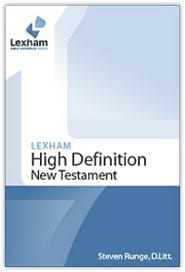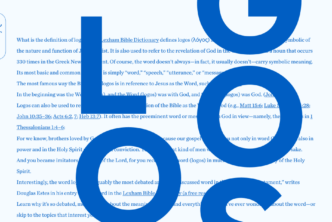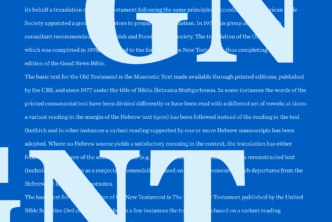Today’s guest post is from Dr. Steve Runge, a scholar-in-residence at Logos Bible Software, whose work focuses on the discourse grammar of Hebrew and Greek.
This post is about another one of the discourse devices found in the Lexham High Definition New Testament and the Lexham Discourse Greek New Testament. When reading the NT, we come across words like ‘behold’ or ‘truly’ that we do not use much in English. So what purpose do they serve in the Greek NT? These and other words function as ‘attention-getters’, and serve to draw attention to something unexpected or important that immediately follows. Attention-getters are often used in combination with other devices, especially meta-comments.
When we are telling a story, we will often throw in extra words at different points to add more drama or flair just before something surprising or important. Take a look at some examples:
- Just as I looked up, just like that this bear appears out of nowhere.
- While I was turning into the driveway, bang, I ran over my son’s bike.
- We were walking down the trail when out of nowhere a mountain biker appeared.
- I was doing some repairs on the house when, get this, one leg of the step ladder gave way and wham, I hit the ground.
In each of these examples, the bolded words could have been left out without significantly altering the meaning of what is communicated. We also find attention-getting devices in the NT that accomplish similar purposes. They tend to be placed just before something that is surprising or important.
Here are some examples from the NT.
Now when they had departed, behold, an angel of the Lord appeared to Joseph. (Matt 2:13)
But when Herod died, behold, an angel of the Lord appeared in a dream to Joseph. (Matt 2:19)
And when Jesus was baptized, immediately he went up from the water, and behold, the heavens were opened to him, and he saw the Spirit of God descending like a dove and coming to rest on him. (Matt 3:16)
And behold, a voice from heaven said, “This is my beloved Son, with whom I am well pleased.” (Matt 3:17)
In each of these examples from Matthew, the word ‘behold’ is placed just before something surprising or important, like the appearance of an angel or the voice from heaven. The same information could have been communicated without the attention-getter, but it would not have had the same ‘zing’ as it does with ‘behold’.
Examples of other attention-getters that are found in the NT include:
- ‘he who has ears, let him hear’ (e.g. Mark 4:9, 23; Luke 14:35; Rev 2:7)
- ‘truly’ (e.g. Matt 5:18; Mark 14:30; Luke 9:27; John 1:51)
- ‘woe to you’ (e.g. Matt 23:13, 15, 16, 23, 25, 27, 29)
- ‘alas’ (e.g. Matt 24:19)
- ‘God is witness’ (e.g. 1 Thes 2:5)
The important thing to keep in mind is that these attention-getters could have been omitted without significantly changing the content of what was communicated. The presence of the attention-getter represents the choice to attract extra attention to what follows. If you are interested in devices like these, check out the description on the Pre-Pub pages of the Lexham High Definition New Testament and the Lexham Discourse Greek New Testament. Links to previous blog posts describing other discourse devices can be found there.





